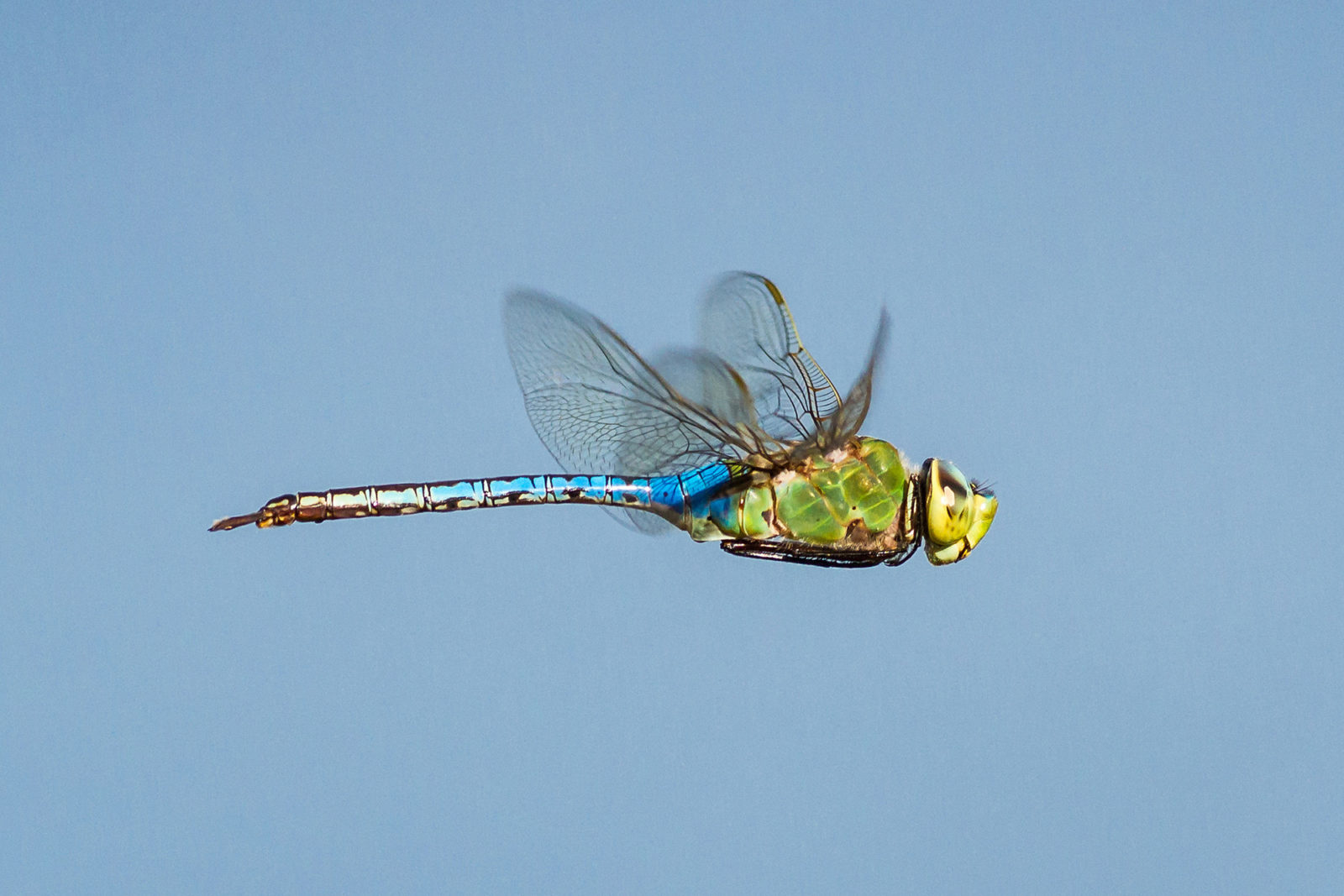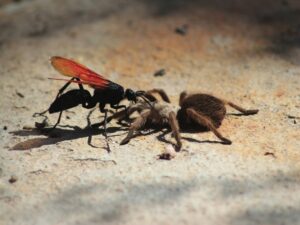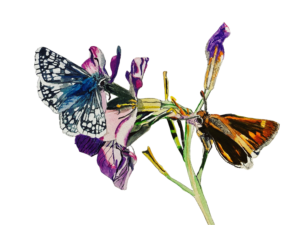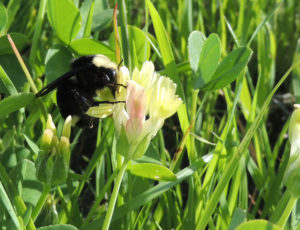Last October, while hiking on Mount Tamalpais, near Laurel Dell, I saw numerous swarms of dragonflies. Could you tell me more about this phenomenon? Is it seasonal? Or triggered by weather or courtship? -Khiem, San Jose
Those dragonflies were most likely congregating to hunt, catch, and eat abundant insects that were also swarming. This is indirectly weather-related, because dragonflies are active only on warm days. Most need an air temperature of at least 63 degrees to get moving.
Dragonflies and damselflies belong to an ancient insect group called the Odonata, some of the earliest flying creatures on our planet. Dragonflies are big, strong fliers. They have very large eyes and hold their wings out straight when resting. Their cousins, damselflies, are smaller and have a weak, fluttery flight. Damselflies have small eyes and rest with their wings held up directly over their thorax.
While driving through the Central Valley near Williams last August, I encountered thousands, maybe millions, of common green darners, our state’s second-largest dragonfly. As far as I could scan through binoculars in every direction for miles and miles, the air was filled with them. These iridescent giants were in constant flight, hunting insects breeding in the standing water and irrigation ditches so prevalent in this fertile agricultural land. On Mount Tamalpais I have seen swarms of common greens but also of the variegated meadowhawk. I suspect the latter may be what you saw. This widespread dragonfly, which grows to about two inches long and varies in color from pink to tan to dull gray, can be active year-round in the Bay Area, even in winter.
The swarming you saw probably had nothing to do with mating. There are over 60 kinds of dragonflies in California and more than 28 in the Bay Area, so mating strategies vary quite a bit among species. In some species, males wait and pounce on females as they fly by, and there is little color difference between males and females. The males of other species, like the western pondhawk, establish territories over a patch of prime real estate (rich with insect prey—freshwater ponds, lakes, streams, rivers, even poorly maintained hot tubs) and chase off rival males and attempt to copulate with every female that comes into their range. These species sometimes show a marked difference between females and males; the males are brilliantly colored with more vibrant facial patterns, which make it easier for them to tell potential mates from rivals.
Two great references are Kathy Biggs’s self-published pocket-size guide Dragonflies of California (Bigg’s Wildlife Pond) and Tim Manolis’s UC Press field guide Dragonflies and Damselflies of California (UC Press).





